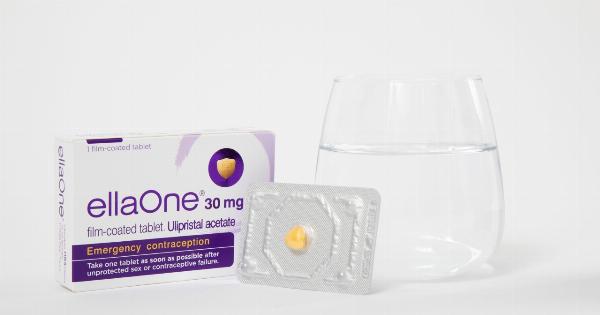Contraception offers a range of options for preventing pregnancy and choosing the right one for your lifestyle and health can be challenging.
Over the years, advances in technology and research have led to the development of more effective and safer methods. Let’s take a look at some of the latest advances in contraception in this article.
1. Long-Acting Reversible Contraceptives (LARCs)
LARCs are a group of contraceptive methods designed to offer long-term protection against pregnancy, without requiring daily or weekly upkeep. These methods are highly effective and require less user compliance than other forms of contraception.
The three most common types of LARCs are:.
1.1 Intrauterine Devices (IUDs)
IUDs are small, T-shaped devices that are inserted into the uterus by a healthcare provider. They can remain in place for up to 3-10 years, depending on the type of device.
They work by creating an environment in the uterus that makes it difficult for sperm to survive and fertilize an egg. Some advantages of IUDs include:.
- Highly effective at preventing pregnancy (more than 99% for most types).
- Can be used as an emergency contraception method within 5 days of unprotected sex.
- May reduce menstrual bleeding and cramps in some women.
- Can be removed at any time by a healthcare provider.
1.2 Injectable Contraceptives
Injectable contraceptives are given by a healthcare provider as a shot into the arm or buttocks. They can remain effective for up to 3 months. The most common type of injectable contraceptive is Depo-Provera, which contains the hormone progestin.
Depo-Provera works by preventing ovulation and thickening the cervical mucus to prevent sperm from reaching the egg. Some advantages of injectable contraceptives include:.
- Highly effective at preventing pregnancy (99% with typical use).
- Convenient and easy to use.
- May reduce menstrual bleeding and cramps in some women.
- Can be quickly discontinued if side effects occur.
1.3 Subdermal Contraceptive Implants
Subdermal contraceptive implants are small, flexible rods that are inserted under the skin of the upper arm by a healthcare provider. They can remain in place for up to 3-5 years.
The most common type of implant is Nexplanon, which contains the hormone etonogestrel. Nexplanon works by preventing ovulation and thickening the cervical mucus to prevent sperm from reaching the egg. Some advantages of subdermal contraceptive implants include:.
- Highly effective at preventing pregnancy (99% with typical use).
- Convenient and easy to use.
- Can be quickly discontinued if side effects occur.
- May reduce menstrual bleeding and cramps in some women.
2. Digital Contraception
Advances in digital technology have led to the development of new contraceptive methods that use apps, sensors, and other digital tools to track fertility and predict ovulation. Some examples of digital contraception are:.
2.1. Fertility Awareness-Based Methods (FABMs)
FABMs are methods that rely on tracking menstrual cycles, basal body temperature, and cervical mucus to predict ovulation and fertility.
The newest forms of FABMs incorporate digital tracking devices such as wearable basal body temperature thermometers and fertility tracking apps. Some advantages of digital FABMs include:.
- Can be used to achieve pregnancy or prevent it.
- Non-invasive and hormone-free.
- May increase user awareness of their menstrual cycles and fertility.
2.2. Contraceptive apps
Contraceptive apps use algorithms to predict fertile and non-fertile days based on user-inputted data such as menstrual cycle length, basal body temperature, and cervical mucus observations.
The most popular app-based contraceptive method is called Natural Cycles. Some advantages of contraceptive apps include:.
- Convenient and easy to use.
- Non-invasive and hormone-free.
- May increase user awareness of their menstrual cycles and fertility.
- May provide a sense of control over one’s reproductive health.
3. Male Contraception
While most methods of contraception are designed for women, there have been recent advancements in male contraceptive options as well. Some of the most promising options are:.
3.1. Male Contraceptive Injection
The male contraceptive injection is a type of injectable contraceptive for men that works by reducing the production of sperm. The injection contains a combination of testosterone and progestin, which suppresses the production of sperm in the testes.
Clinical trials have shown the injection to be highly effective at preventing pregnancy, with a success rate of up to 96%. Some advantages of the male contraceptive injection include:.
- Effective at preventing pregnancy.
- Long-lasting protection (up to 12 weeks).
- Non-invasive and hormone-based.
3.2. Vasalgel
Vasalgel is a non-hormonal male contraceptive method that works by blocking the vas deferens, the tubes that carry sperm from the testes to the penis.
It is a gel-like substance that is injected into the vas deferens and forms a barrier to prevent sperm from passing through. Clinical trials have shown Vasalgel to be effective at preventing pregnancy and reversible with a second injection to dissolve the barrier. Some advantages of Vasalgel include:.
- Non-invasive and hormone-free.
- Long-lasting protection (up to 10 years).
- Reversible with a second injection.
Conclusion
The latest advances in contraception offer a range of options for men and women, including long-acting reversible contraceptives, digital contraception, and male contraception.
These options offer a variety of benefits, such as high effectiveness rates, non-invasiveness, and hormone-free alternatives. Choosing the right contraception method is a personal decision that should consider individual health, lifestyle, and preferences.































